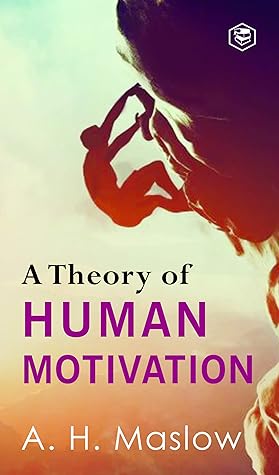More on this book
Community
Kindle Notes & Highlights
Any motivated behavior, either preparatory or consummatory, must be understood to be a channel through which many basic needs may be simultaneously expressed or satisfied. Typically an act has more than one motivation.
Human needs arrange themselves in hierarchies of pre-potency. That is to say, the appearance of one need usually rests on the prior satisfaction of another, more pre-potent need. Man is a perpetually wanting animal. Also no need or drive can be treated as if it were isolated or discrete; every drive is related to the state of satisfaction or dissatisfaction of other drives.
The situation or the field in which the organism reacts must be taken into account but the field alone can rarely serve as an exclusive explanation for behavior. Furthermore the field itself must be interpreted in terms of the organism. Field theory cannot be a substitute for motivation theory.
Motivation theory is not synonymous with behavior theory. The motivations are only one class of determinants of behavior. While behavior is almost always motivated, it is also almost always biologically, culturally and situationally determined as well.
needs, first, the development of the concept of homeostasis, and second, the finding that appetites (preferential choices among foods) are a fairly efficient indication of actual needs or lacks in the body.
We can not identify all physiological needs as homeostatic.
Undoubtedly these physiological needs are the most pre-potent of all needs. What
Another peculiar characteristic of the human organism when it is dominated by a certain need is that the whole philosophy of the future tends also to change.
Obviously a good way to obscure the ’higher’ motivations, and to get a lopsided view of human capacities and human nature, is to make the organism extremely and chronically hungry or thirsty.
Anyone who attempts to make an emergency picture into a typical one, and who will measure all of man’s goals and desires by his behavior during extreme physiological deprivation is certainly being blind to many things.
At once other (and ‘higher) needs emerge and these, rather than physiological hungers, dominate the organism. And when these in turn are satisfied, again new (and still ‘higher’) needs emerge and so on. This is what we mean by saying that the basic human needs are organized into a hierarchy of relative prepotency.
The organism is dominated and its behavior organized only by unsatisfied needs. If hunger is satisfied, it becomes unimportant in the current dynamics of the individual.
it is precisely those individuals in whom a certain need has always been satisfied who are best equipped to tolerate deprivation of that need in the future, and that furthermore, those who have been deprived in the past will react differently to current satisfactions than the one who has never been deprived.
A man, in this state, if it is extreme enough and chronic enough, may be characterized as living almost for safety alone.
One reason for the clearer appearance of the threat or danger reaction in infants, is that they do not inhibit this reaction at all, whereas adults in our society have been taught to inhibit it at all costs.
Here too we may list science and philosophy in general as partially motivated by the safety needs (we shall see later that there are also other motivations to scientific, philosophical or religious endeavor).
any conscious desires (partial goals) are more or less important as they are more or less close to the basic needs.
An act is psychologically important if it contributes directly to satisfaction of basic needs.


